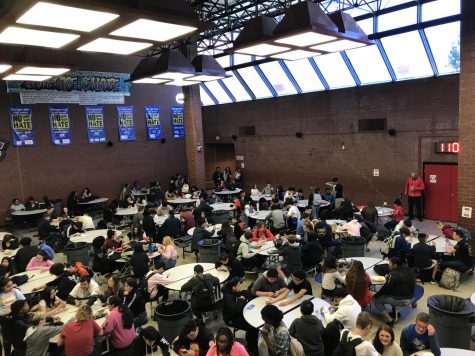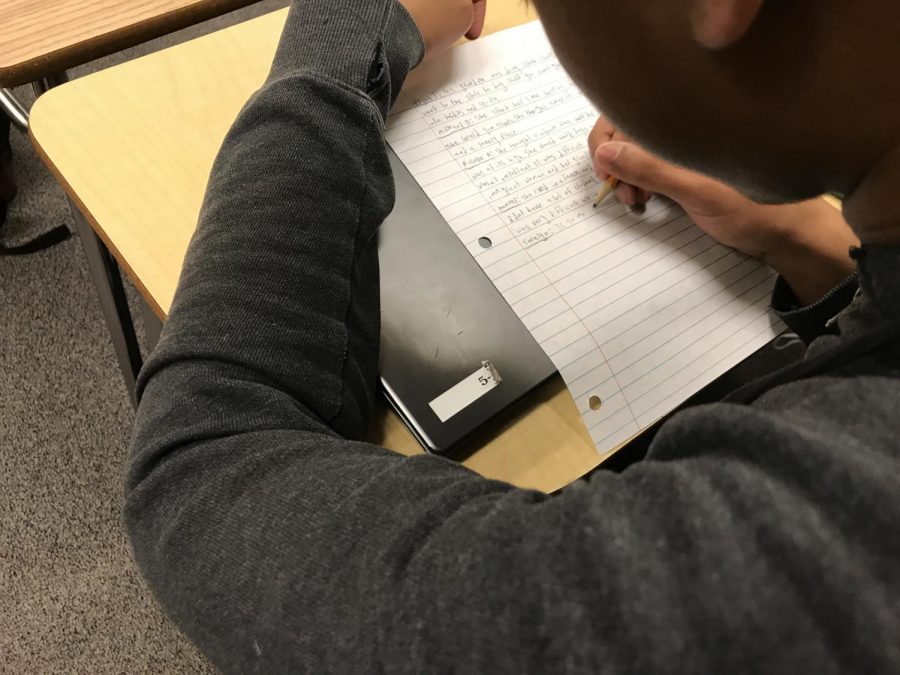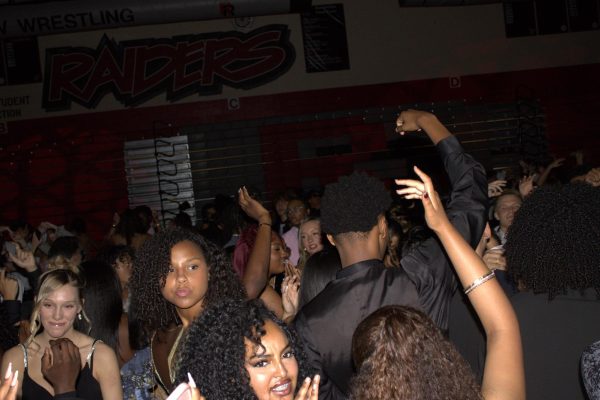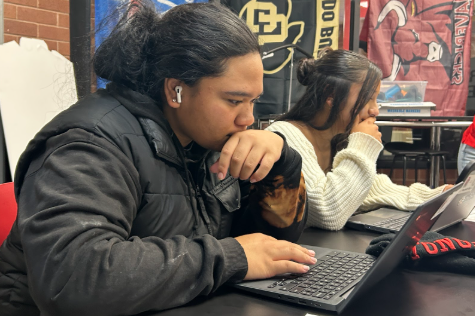American Education is way Behind; A Deep Dive
A sophomore student is seen doing work in his honors English class. Some students can feel overwhelmed or stressed due to a high level of honors classes and a pressure to succeed. (Dylan Tressider)
March 11, 2020
The modern school system is riddled with standardized tests, waking up before the sun rises, learning book smarts first, then technical and life skills second, if they are ever taught or learned at all. Sleep-deprived, sad, and distressed teens have become a staple of American life, and this is hurting their ability to learn, play, and function normally as teenagers.
Student Conditions
Sleep Deprivation-
Sleep deprivation has become a plague in American schools. According to the Sleep Foundation, only 15% of teenagers get the recommended amount of sleep. For perspective, that is approximately 1 in 7 teenagers getting the sleep they should be getting, meaning that only an estimated 4-5 students per class are getting adequate sleep.
Without a doubt, this famine-like shortage of sleep is affecting many students’ learning abilities. In fact, according to Healthy Sleep, sleep deprivation harms learning in two ways. Firstly, a person who is getting less-than-optimal sleep will struggle to, “focus attention optimally, and therefore cannot learn efficiently”.
Sophomore Doug Domenico said, “Lack of sleep does affect my ability to learn because when I’m tired in class I can’t focus and it’s very hard to stay awake sometimes.”
To compound this, all human memories and emotions from the day are sorted through during sleep, and when a student does not get enough of it, they may not be able to process their learning as effectively or have a healthy relationship with their emotions.

Lack of Play and Breaks-
When most students think of high school, they don’t think of playtime. However, according to studies, perhaps they should. While yes, it must be conceded that playtime is most beneficial to young children, there is no doubt that high schoolers can also benefit from it. According to Child In The City, playtime is not only a time for stress relief and energy release, but it also builds neurological pathways in the brain. Lack of play can lead to increased anxiety.
At Rangeview and most high schools, however, playtime just isn’t a feasible option. Despite this, there is significant research that indicates break time also increases cognitive function. In fact, according to Learning Liftoff, break time can:
- Improve Attentiveness
- Boost Learning Productivity
- Reduce Student Stress
- Nurture Social Skills
- Increase Memorization Ability
Unfortunately, the average amount of break time (lunch) for high schoolers with a full schedule sits at a measly thirty minutes, the only break they get in a strenuous seven (or more) hour day. In addition to breaks, a longer lunch could also positively increase student health. In fact, according to Real Simple, the longer students have to eat lunch, the more likely they are to eat their food, including nutritious foods.
And it’s not just data; students want longer lunches as well. Sophomore Adolfo Flores said, “I would like a longer lunch since this would help me and other students because it lets us relax. Also, Cherry Creek has a longer lunch [than Rangeview] and they are a better district.”
Overloading Standardized Tests-
Today, students are trained and educated to excel in standardized tests that may not reflect their actual ability. These tests add stress, needlessly add to course rigor, and these sorts of tests usually aren’t a very good indicator of how the student performs in a classroom environment.
This isn’t the only problem with overloaded standardized tests, however. The overemphasis of standardized tests has also led to a massive decrease in student learning in the department of technical and life skills. Furthermore, it has been heavily researched that standardized testing is not economically fair, either. It harms poorer students and favors those of wealthier backgrounds.

Teachers are Hurting, Too; Teacher Conditions
Students are being pounded and beat down with useless information and stress every single day. However, they are not the only ones who are being harmed by America’s out of date education system. Teachers are being constantly and consistently beat with high expectations, low pay, and difficult working environments.
Teachers are expected to grade hours upon hours worth of papers from 100 or more students, and most of this grading takes place outside of school (since their off periods are better spent planning for future lessons), and this is essentially extra work that they must do and are not paid for. It isn’t fair to them, and this extra workload forces them to be just as tired as the students, decreasing their ability to teach as well as they could, especially when most teachers have to wake up at around 5-6 AM.
U.S History and African-American Studies teacher, Samantha Westerdale, said, “Please know that I love my career and everything that is Rangeview. It’s the only place I want to be. Yes, as a teacher, I feel over stressed, overworked, and underpaid. Yes, I believe fixing these issues would improve my ability to teach by not having to take work home every other night and the weekends. Going home does not mean I can simply stop thinking about work–it’s always on mind with planning, grading, and the general idea of how my students are doing. I love my job, but there is simply not enough time in the day to keep up. I want these issues addressed on a national level because it is turning people away (low pay, stress-filled days) from a great career. We need good teachers. It’s difficult to keep them within their first 5 years with the intense amount of responsibilities required to be successful.”
It’s not only that, however; teachers are paid far too little for what they do. According to the National Education Association (NEA), the average starting pay for a teacher in Colorado is $33,438 (Around $37,000 for high school teachers). Granted, their pay is raised each year that they teach, but even so, they are still grossly underpaid, especially when compared to their similarly-educated counterparts. Add to this that they must deal with difficult students, and their wage seems even more grossly unfair, and even the top 20% of teachers only make $78,000.
Solutions and Comparative School Systems
Reforming and changing an institution that has functioned in more or less the same manner for a number of decades is, put simply, an extremely arduous and mentally onerous process. However, that doesn’t make the task any less necessary.
The American school system is far behind other systems, such as Finland’s. Finnish children have longer breaks, shorter days, and much of their schooling is not mandatory. And yet, somehow, their school system is far ahead that of America’s. Children in Finland aren’t even required to attend classes until age 7, whereas Americans begin at the early age of 4.
American education is way behind many other places as well, including places like Japan. And, despite America’s rigorous and long school days, the U.S. only ranks #125 in literacy rates across the world, with Finland ranking #2 according to World Atlas.
Rangeview is an amazing school, but unfortunately is not immune to the shortcomings of the American school system. In fact, according to The Atlantic,the average start time for high schools across the country is approximately 7:59 AM, and yet Rangeview begins at 7:30 AM, 29 minutes earlier than the national average for high schools. This isn’t easy for students, teachers, or staff by any measure.
It’s 2020 now, and teenagers are always told that they are not the center of the world. They know that, and they don’t want to be the center of the world. They just want to feel like somebody actually cares about their well-being and their future in an education system who has long since given up on caring about their feelings or opinions.













